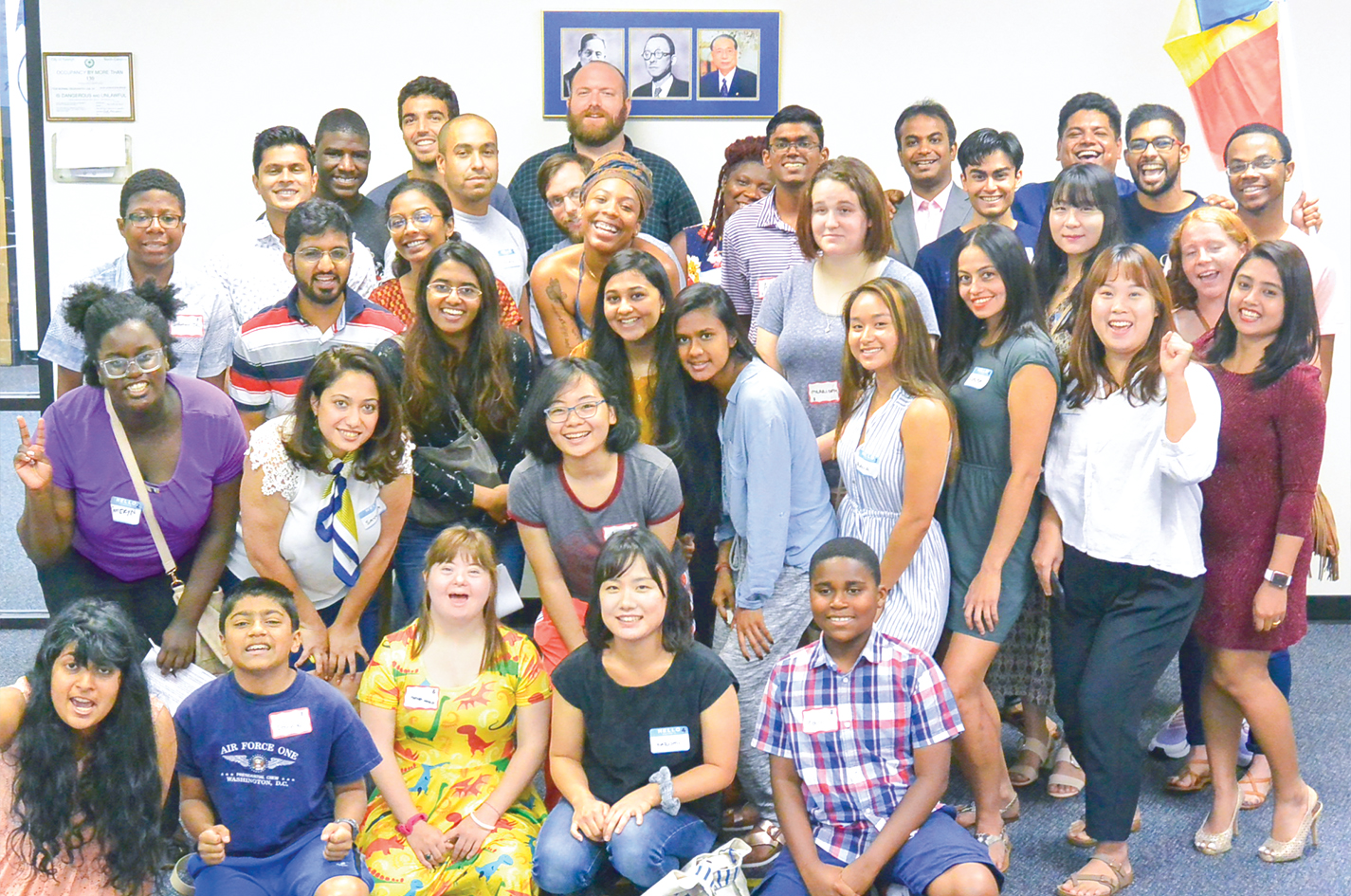“What would a healed America be like?” asked historian and Civil Rights activist Vincent Harding in a discussion with Ikeda Sensei.
Sensei responded, outlining the ultimate purpose of our Buddhist movement:
The root of the English word heal originally included the meanings “totality” and “completeness,” and the word health has the same root. In this sense, a healed society would be a society that has discovered its sense of wholeness and has achieved equality for every person. This would be a society in which the social system and its laws serve the people. It would be a society in which people respect one another and live with dignity and equality. They would share a deep trust in one another, come to one another’s aid and grow and learn from one another. These are some of the most important objectives of our Soka Gakkai International movement. (America Will Be!, p. 129)
Certainly, now is the time to heal our society. And, as Nichiren Buddhist practitioners working toward that goal, we are further expanding the path blazed by Shakyamuni Buddha, Nichiren Daishonin and the three founding Soka Gakkai presidents.
Shakyamuni’s Vow to Establish Equality in Society
Shakyamuni Buddha taught the equality of all living beings at a time when a caste system strictly separated and confined people, and women were seen as inferior to men.
He engaged with people from every walk of life, teaching that no human being is more valuable than another and that all inherently possess the Buddha nature.
He expressed his resolve for an equal society, stating in the Lotus Sutra: “At the start I took a vow, hoping to make all persons equal to me, without any distinction between us” (The Lotus Sutra and Its Opening and Closing Sutras, p. 70).
The Power to Break Through Differences
Solely identifying ourselves based on our race, gender, social status and other external conditions has led to the horrors of racism, nationalism and the subjugation of people. “Discriminating against another person is the same as discriminating against oneself” (The Wisdom of the Lotus Sutra, vol. 1, p. 149), Sensei says.
While each individual is unique, Buddhism teaches the ideal of the bodhisattva, which seeks to reveal the common roots we share that extend beyond what we see on the surface.
Bodhisattvas do not look a certain way or come from a particular place. They are ordinary individuals awakened to the truth that each person is worthy of absolute respect and that true happiness can only be achieved by working for and with others.
The Lotus Sutra describes the Bodhisattvas of the Earth emerging from beneath the ground, ready to create a world centered on the peace and happiness of all humanity. Rather than a select group of people, these bodhisattvas represent the enlightened qualities inherent in us all: they are determined, courageous, wise, compassionate, persistent, dignified and virtuous (see LSOC, 263).
The practice of chanting Nam-myoho-renge-kyo with a vow for the happiness of humanity enables us to transcend our differences and reveal these inherent qualities. Sensei states:
Failing to comprehend the greatness of their own lives, people become attached to unimportant details. The power of the Bodhisattvas of the Earth is the essential power we human beings possess to break through all differences—ethnicity, race, gender or social standing—and lead people to happiness. (WLS-3, 216)
“Eternal Activists” Working Toward Harmonious Coexistence
The SGI continues to develop as a collective of individuals who strive to transform society based on Buddhism’s essential spirit of equality.
A decisive event that helped deepen our understanding of equality in Buddhism was our spiritual liberation from the Nichiren Shoshu priesthood in November 1991.
The priesthood had twisted Buddhist doctrine in an attempt to establish its religious authority and a hierarchy of power. Former Nichiren Shoshu priests explain that this hierarchy, from top to bottom, consists of: the high priest, the high priest’s family, general priests, their families, their pets and then the laity (see Inside the Nichiren Shoshu Priesthood, pp. 43–44).
The priesthood has long held this idea, trampling on the ideals of equality and respect taught in the Lotus Sutra and Nichiren’s writings.
For instance, Nichiren clearly states: “There should be no discrimination among those who propagate the five characters of Myoho-renge-kyo in the Latter Day of the Law, be they men or women. Were they not Bodhisattvas of the Earth, they could not chant the daimoku” (“The True Aspect of All Phenomena,” The Writings of Nichiren Daishonin, vol. 1, p. 385).
In contrast, the priesthood claimed that only they were the Bodhisattvas of the Earth. Lay practitioners, they asserted, were mere “followers of the Bodhisattvas of the Earth.”
Sensei clarifies, however, that because SGI members are earnestly dedicated to awakening those around them to their inner power, they indeed are Bodhisattvas of the Earth, “eternal activists who base themselves on the Mystic Law” (WLS-3, 215). He adds:
Our efforts to cause countless Bodhisattvas of the Earth to emerge—to help many people revolutionize their lives—amount to a struggle to change the state of life of society at large. It is a struggle to elevate the state of all humankind. Isn’t this the transformation that “breaking through the earth” symbolizes? (WLS-3, 216)
Upholding the Buddhist principle of equality, SGI members today are taking action to transcend all barriers between people, and bring forth an era of genuine respect, equality, peace and harmony.
—Prepared by the SGI-USA Study Department
You are reading {{ meterCount }} of {{ meterMax }} free premium articles

